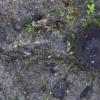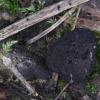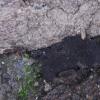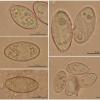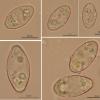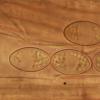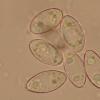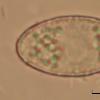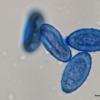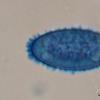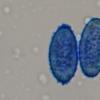
30-11-2025 12:53
 Edvin Johannesen
Edvin Johannesen
White short-stipitate apothecia found on thin twig

30-11-2025 10:47
 William Slosse
William Slosse
I recently found a collection of small Peziza sp.

27-11-2025 12:01
Thomas Læssøehttps://svampe.databasen.org/observations/10496727

27-11-2025 11:46
Thomas Læssøehttps://svampe.databasen.org/observations/10493918

17-09-2025 10:50
Heather MerryleesHi there!I am hoping for any advice on the identif

29-11-2025 08:40
 Andreas Millinger
Andreas Millinger
Hello,on a splintered part of a branch on the grou

28-11-2025 16:45
Nogueira HéctorNovember 23, 2025 Requejo de Sanabria (León) SPAI

25-11-2025 14:24
Thomas Læssøehttps://svampe.databasen.org/observations/10490522

27-11-2025 15:41
Thomas LæssøeSpores brownish, typically 4-celled; 26.8 x 2.4;

27-11-2025 11:31
Thomas LæssøeCollectors notes: Immersed ascomata, erumpent thro
Little black Peziza (apiculate)
Zuzana Sochorová (Egertová),
27-08-2024 17:12
 Hello,
Hello,I would like to consult this little Peziza, which macroscopically resembles Plicariella scabrosa (especially when young).
There were 3 apothecia, 3.5-8.5 mm in diam., black, with a rough outer surface.
Ascospores (17) 18.6-21.2 (22.9) × (10.1) 10.3-11.6 (12.6) µm, Q = (1.6) 1.7-2; n = 32, Me = 19.8 × 10.8 µm; Qe = 1.8 (without orn.), ellipsoid to subfusoid, uninucleate. Ornamentation very variable, consisting of warts which partly anastomose; the poles are sometimes multiapiculate, spiny, or with ornamentation resembling a fish fin, while sometimes the warts are not higher than elsewhere on the spore surface. The height of polar ornamentation is mostly 0.5-1.5 µm, rarely up to 2.7 µm. I have never observed a spore with a single large apiculus, typical for Peziza apiculata.
Czech Republic - Moravia, 25 August 2024, on soil near a brook, on calcareous background (together with Melastiza flavorubens).
The best option I have found is Phaeopezia vagneri, but the spore size given in literature is somewhat larger. What do you think?
Zuzana
Nicolas VAN VOOREN,
27-08-2024 17:50

Re : Little black Peziza (apiculate)
I think Phaeopezia vagneri is the best hypothesis.
Zuzana Sochorová (Egertová),
27-08-2024 18:19

Re : Little black Peziza (apiculate)
Great, thank you very much for confirmation!
